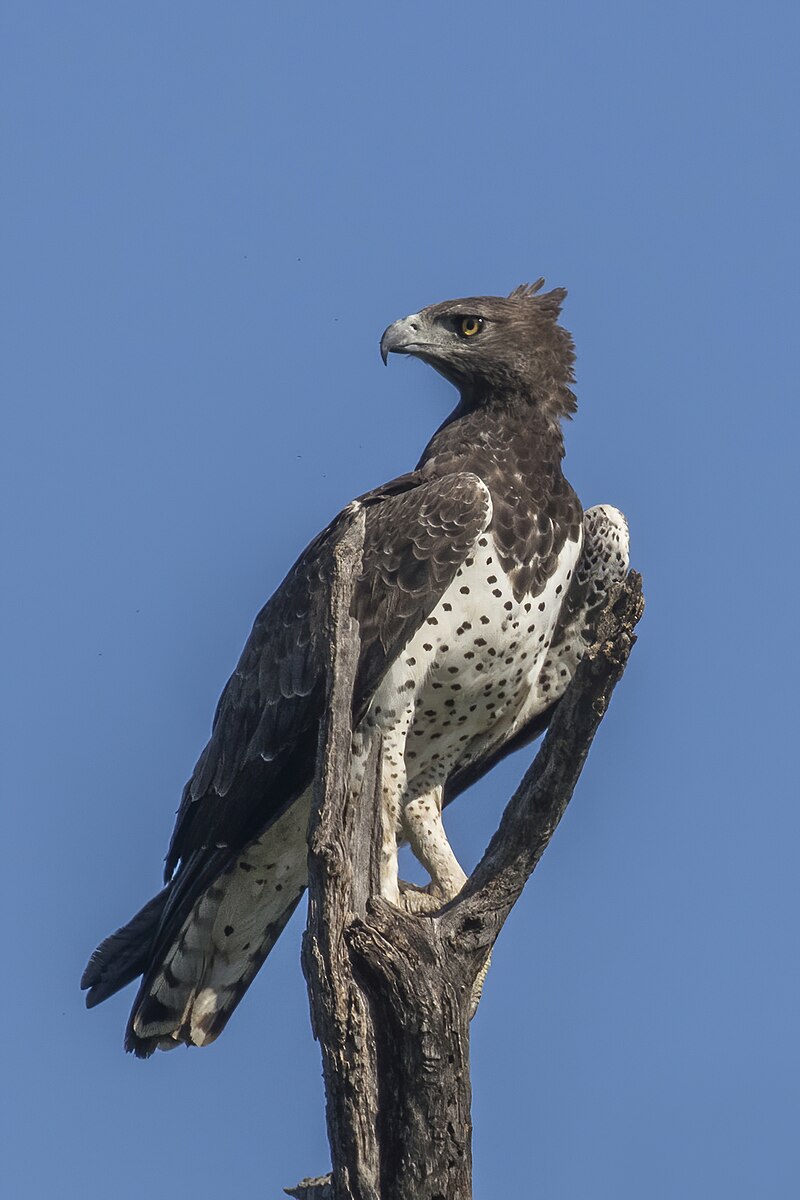The Martial Eagle (Polemaetus bellicosus) is the largest eagle in Africa, known for its powerful hunting abilities. This majestic bird of prey has a unique and captivating life cycle that is worth exploring.
The Breeding Cycle of the Martial Eagle
Martial eagles have a slow breeding rate, typically laying one egg every two years. The eggs are large, measuring 79.9 mm × 63.4 mm on average, and are incubated for 45 to 53 days, mainly by the female. The male may relieve the female for short periods, but for the most part, brings prey for the female to distribute between herself and the nestling.
Incubation and Hatching
The incubation period for Martial Eagle eggs lasts between 45 to 53 days. During this time, the female is primarily responsible for keeping the egg warm and protected. The male may occasionally take over incubation duties, but his primary role is to provide food for the female.
Parental Care and Feeding
Once the eggs hatch, the male of the pair rarely broods the young, but has never been seen to feed the chick. The female resumes hunting seven weeks after hatching, and both mature eagles from the breeding pair may be found roosting on their own in some prominent tree up to several miles from the nesting haunt, probably hunting for several days in one area and then moving on to another area.
Mating and Pair Bonding
 Image source: Martial eagle by Charles J. Sharp
Image source: Martial eagle by Charles J. Sharp
Martial eagles form monogamous pairs and stay together for life. The birds don’t have a spectacular display flight, and their display often consists of the adult male or both members of a pair circling and calling over their home range area. During mutual circling, the adult female may turn and present talons.
Breeding Season Variations
Martial eagles may breed in various months in different parts of their range, with the mating season taking place in November-April in Senegal, January to June in Sudan, August to July in northeast Africa, and almost any month in east Africa and southern Africa, though mostly in April-November.
Threats and Conservation Status
The main threats to Martial eagles include hunting and habitat loss. Farmers kill the birds because they hunt domestic animals, and the eagle’s low reproductive rate is also a problem for its long-term survival. According to the IUCN Red List, the population of this species in South Africa, Lesotho, and Swaziland are around 800 pairs, and the population in Namibia includes less than 350 pairs. Currently, Martial eagles are classified as Endangered (EN) on the IUCN Red List, and their numbers today are decreasing.
In conclusion, the Martial Eagle’s life cycle is a fascinating and complex one, marked by its slow breeding rate, monogamous pair bonding, and unique hunting and parental care behaviors. Understanding the challenges this species faces, such as hunting and habitat loss, is crucial for its conservation and the preservation of this majestic bird of prey.

